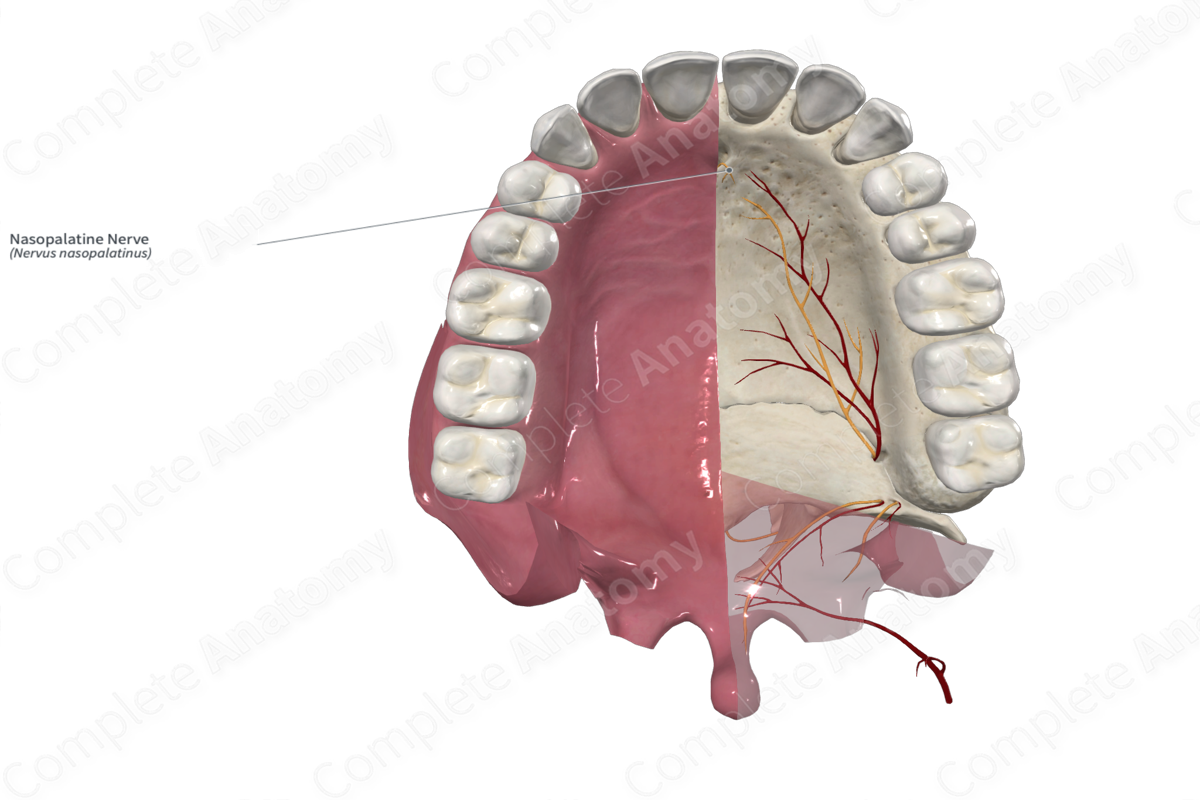
Quick Facts
Origin: Pterygopalatine ganglion.
Course: Runs medially through the sphenopalatine foramen, across the posterior nasal cavity to the nasal septum, and then anterior and inferiorly to and through the incisive canal.
Branches: None.
Supply: Sensory: conveys general sensation from the mucosa of the nasal septum and the anterior most hard palate; Parasympathetic: innervation to mucosal glands of the nasal septum and anterior hard palate.
Related parts of the anatomy
Origin
The nasopalatine nerve originates as a branch of the maxillary nerve. It branches off the pterygopalatine ganglion.
Course
From its origin, the nasopalatine nerve runs medially and slightly inferiorly, passing through the sphenopalatine foramen to exit the pterygopalatine fossa and enter the nasal cavity.
In the nasal cavity, the nasopalatine nerve crosses the roof of the nasal cavity to reach the posterior nasal septum. It runs anteriorly and inferiorly down the septum towards the incisive canal. After passing through the incisive canal, the nasopalatine nerve terminates on the anterior-most hard palate, just posterior to the incisors, or it anastomoses with fibers of the greater palatine nerve.
Branches
There are no named branches, however, the nasopalatine nerve anastomosis with fibers of the greater palatine nerve on the anterior hard palate.
Supplied Structures
The nasopalatine nerve is a mixed nerve carrying sensory and parasympathetic fibers. Its sensory fibers have cell bodies located in the trigeminal ganglion, while the parasympathetic fibers originate in the pterygopalatine ganglion.
The sensory fibers convey general sense information from the nasal septum, anterior most hard palate, and the lingual gingiva of the incisors.
The parasympathetic fibers innervate the small mucosal glands of the nasal septum and anterior hard palate.




